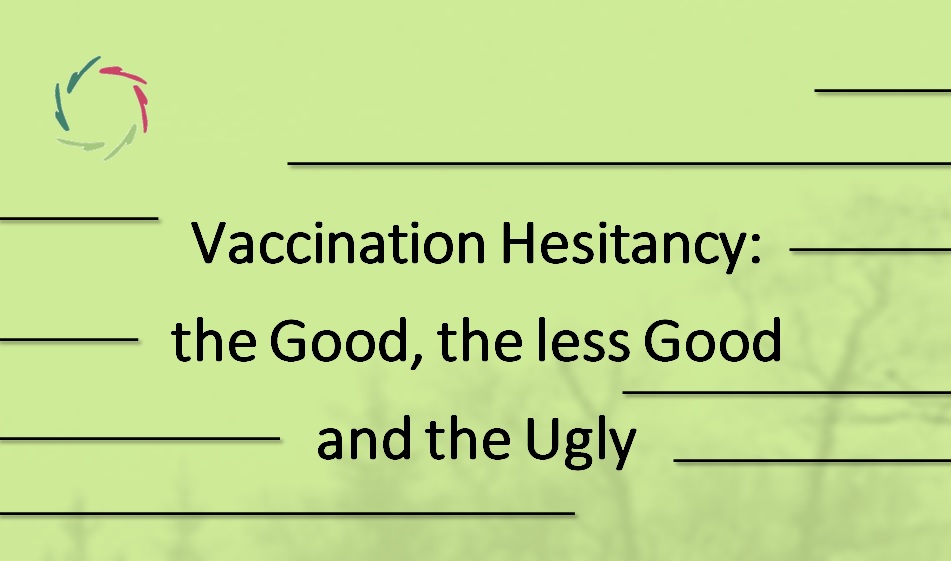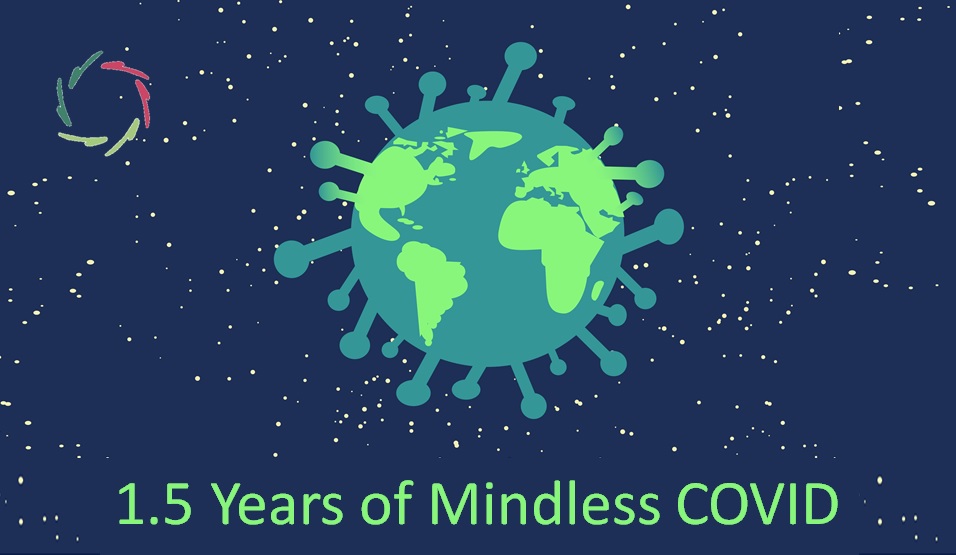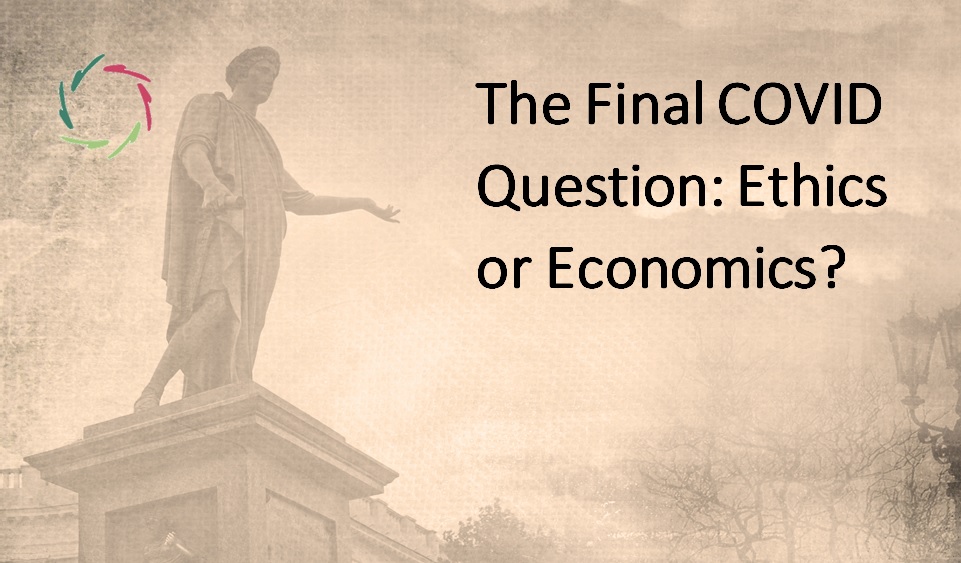13. Winter of COVID

Second Wave Corona? One big or several smaller ones? While we don’t know what is to happen, we can search for arguments.
June 25, 2020
Quoting Andrea Ammon
Director of the European Centre for Disease Prevention and Control, 21 May 2020:
“It’s not a question of if there will be a renewed surge but “when and how big”.
That means hoping for the best but preparing for the worst. The latter is a likely resurgence of COVID-19, across countries, through regions, in towns and communities. Including the renewed choice between lockdowns and lives.
Much depends on caution.
But how to be cautious and what works in caution, again, we don’t know.
For instance, statistics clearly show that lockdown works. There is no doubt. It may have saved and is still saving millions of lives worldwide. It was/is a good thing!
But statistics don’t tell us precisely how it works. The biggest issue that I see – as to the central theme in Minding Corona – is whether it works conceptually or subconceptually. Both, indeed, which makes it a question of proportionality.
Subconceptual?
To repeat in a few words: ‘subconceptual’ points to mental patterns that hardly or not need to reach conscious awareness in order to have meaningful effects upon mind or body. Like something may be bothering you, and you aren’t consciously aware of it, yet you can feel a resulting tension or pain somewhere in your body. This is scientifically uncontroversial in many fields of chronic pain and more.
Lockdown may subconceptually work by giving people the confidence that things will be all right. This confidence provides a message in the way of a placebo. It can have a positive effect if deeply felt. It may keep one out of a mind-body whirlpool.
[Whirlpool image: ten meters from it, it’s innocuous. Go ten meters further from it and you’re completely out of danger. Get the same distance towards it and it drags you down. Yet ten meters from it, if you don’t see it, it may be hard to fathom.
I don’t explain nocebo again. It may also play a huge role in what is happening in COVID-19 in the recent past and near future, in reverse to the previous. It may push people deeper into the whirlpool.
This way, we are talking Winter of COVID. Since the world cannot go in lockdown again and again, we will need to face the virus head-on, with little herd-immunity.
As to the Minding Corona premise, if not taken into account, this would be a second whirlpool.
The first wave happened surprisingly abrupt in several parts of the world. At least in Western Europe, at present, it also subsided surprisingly suddenly.
Just looking at this, it’s imaginable that a second wave will surge surprisingly abrupt.
‘Surprisingly’ means that we don’t know exactly all relevant parameters in this. Those deemed important may play a secondary role. On the other hand, an interplay of factors may give rise to a self-enhancing pattern, described by me as a whirlpool of mind and body elements.
As I show in many domains, mind and body naturally go together in one structure, namely a human being as a complex living organism. Not a mechanism; an organism in which complexity and emergence play substantial roles. The whirlpool appears within this structure. Take each of the elements on its own, and the whirlpool doesn’t emerge. The whole is way much more than the sum of the parts. This may be the case for a surprising amount of other disorder as well. [see Your Mind as Cure]
Invisible mind in an invisible whirlpool
In the COVID-19 story until now, I haven’t seen the mind described as a causal element. There has not been any clarification of this as one can do from cutting-edge neurocognitive science, and as I have done so myself in the first part of The Journey Towards Compassionate A.I.
So, logically, there has not been any description of the whirlpool in which the virus and the mind can play a determining role in several respects. Therefore, there has not been any description from this insight into what happened and may happen again. And, indeed, what is happening in different parts of the world.
Why can this winter be the worst in Europe?
In a previous text, I mentioned the seasonal curves of other coronaviruses as have been academically investigated. These show a sharp seasonality, peaking in the winter, with maxima in January and February. In the springtime of 2020, COVID-19 has taken us by storm in Europe mainly from mid-march and even a bit later in the US. If the present coronavirus acts the same as these other ones, we may have witnessed only the tail of the beast. Over the year from now on, we may see the whole beast, with its belly at the start of 2021.
Also, the new coronavirus came after the Influenza season. Next time, both will come in combination. This does not mean that two half-diseases will make one person having a disease. It means two diseases at the same time. For the immune system: two enemies to battle at the same time. Let’s hope this description is exaggerated. If not, then the cohort of vulnerable people will be bigger; ages of the severely diseased will be younger; complications and deaths more frequent.
Also, there will be, as every year, a lot of common colds in all age groups. The common cold may be from another virus. Still, in such case, the sneezing and the coughing are there. Combine this with the fact – as researchers agree [Nature, 2020] – that children have viral loads comparable to those of grown-ups, only don’t get COVID themselves [BI et al., 2020], they will be sneezing and coughing the coronaviruses around in the autumn and winter, more than in the previous springtime. Put them in schools together and you have one big timebomb. Other respiratory viruses are known to circulate in schools and day cares. To the kids themselves, this may be mainly one more, but not to their (grand)parents.
Dear God, let me be wrong.
Also, with much common cold around, it will be more difficult to ask people to self-isolate when symptoms appear. The first symptoms of common cold and COVID-19 are pretty much the same. A gigantic amount of testing might relieve this, but has its specific problems.
Also, all the previous together may make people believe that it’s all out of control. One can see the whirlpool turning.
Also, economists warn that the economy cannot take a second lockdown in the way of the first. It will be a different story. Businesses are barely surviving now. Money cannot be artificially made by governments ad infinitum. So, will we again wait too long and need to lockdown anyway with tremendous health costs on top?
Has the virus already became milder in time?
As a glimmer of hope, according to some researchers, COVID-19 (the disorder) seems to have become milder in the few months from the start of the first wave in Europe. This needs confirmation. Some conclude from this that the virus itself has changed already, so, a second wave would be less severe and we shouldn’t worry too much.
The latter is true. We shouldn’t worry too much, for the anxiety adds to the whirlpool’s ‘energy.’ In this sense, warning for a huge second wave may even be self-fulfilling. I hope this text is not a part of that. In my view, openness and inner strength are preferable also in this respect.
But one cannot conclude any evolution of the virus itself from the evolution of the disorder. Anyway, the biggest part of the disorder is not related to the virus but to the immune response. So, this seems to have become milder. That is foreseeable from the Minding Corona premise. People gradually get used to disasters, even to big disasters, with time. Such is also seen in wartime.
Besides, could the virus itself in its replication thrift learn so quickly, and adapt to the fact that killing its host hampers its own replication? Here too, it’s relevant to point out that the over-reaction of the host frequently occurs when the viral load itself has already diminished. It would be amazing that the virus learns from a projection into the future.
A diminishing strength of the disease would be one more indication that the mind indeed influences the immune over-reaction against the virus.
In second-wave, this may be crucial. One may try to relieve the relevant factor. ‘Anxiety’ is a broad term for this, much too broad in my view, but still a good direction to start with. It’s also a multifaceted term. We can use it further on [see also: “Motivation Without Anxiety”] to expound upon how to tackle a second wave or any wave.
After a vacation from the virus, at the strike of second wave, people may again start from full-panic mode. Will it be less or more than the first time? Much of this is up to our thinking about it and our taking action without delay.
The concept of ‘negative carrier’
Can a person be a carrier of the virus for a long time, be infectious and yet all this time test negative? Or can a virus go under the testing radar for a while to then reappear and provoke an infection from inside out?
There are a lot of ‘ifs’ in this. With a new virus, anything is possible, but not anything is probable. Let’s think about it.
According to an article in the British Medical Journal [BMJ, 2020], a “systematic review of the accuracy of COVID-19 tests reported false negative rates of between 2% and 29%, based on negative RT-PCR tests which were positive on repeat testing.” This is quite high. However, as a gold standard, repeat testing is bound to underestimate the true rate of false negatives, possibly to a huge degree. Indeed, how would one rule out a ‘negative carrier’? If the test is its own gold standard, a negative carrier will remain a negative carrier until, of course, he becomes a positive carrier. This way, we cannot rule out the existence of negative carriers.
So, yes, they may exist, in principle. We don’t know for how long they can remain so, let alone do we know if or when they can be or become contagious.
What surely does exist is asymptomatic transmission. A number of studies have documented this already in March. It has been pointed out as a reason why the virus has been hard to control. It is a reason why someone should stay at home when someone else in the household may have coronavirus infection. Research among staff in the hospitals run by a leading NHS trust in the north of England found that 7% had coronavirus on testing but had no symptoms, and thus posed a risk to patients. According to NHS bosses, “Up to a fifth of patients with COVID-19 in several hospitals contracted the disease while being treated there for another illness.” [The Guardian, 2020].
How many more were/are negative carriers? We don’t know.
Negative carrier + stress = positive carrier?
One possibility is that a negative carrier becomes ill when a combination occurs with other factors (seasonal) and stress. This would mean that during the summer, a lot of people can become negative carriers with viruses in the waiting room, present just like any other commensal viruses.
This is what may be happening during the summer of 2020 in Europe, at massive scale.
Virome
The set of commensal viruses is called the human virome and is probably rich and diverse although not yet very well studied because of difficulties in detecting viruses in the background of the abundant human genome, generally requiring additional manipulations. [Moore et al., 2017] Such viruses can be our guests for a long time and be very prevalent, mostly causing no harm, living in the guts, on the skin or elsewhere. Sometimes, they cause cancer after many years or in specific circumstances, such as immunosuppression. Well-known is the recurrence of Herpes Simplex as a zona in people who have been infected years before. The resurgence is definitely related to stress. This case is too far removed from our coronavirus in order to act as a proof. It’s an indication.
The new coronavirus can become part of the virome. In that case, unfortunately, in order for it to become a non-dangerous element, a lot of people will need to die, even years from now if no super-vaccine is developed.
So, in principle, viruses can be present in low numbers, escape testing and co-start a whirlpool in specific circumstances, next autumn and winter. It is, again, this whirlpool phenomenon that makes it dangerous.
The enigma Africa
Of course, the virus is very much present in Africa. In a country like Nigeria, for instance, with relatively few COVID-cases, not one province is exempt. How comes the difference between Africans-in-Africa and African Americans (as well as those in Brazil), where cases are soaring disproportionately more in black communities than white?
Is one factor the exposure to racism and its implications (additional daily stress, job opportunities, poor neighborhoods, incarceration)? Are Africans-in-Africa less prone to succumb to the stress-virus due to a different relationship to stress? They may be equally yet differently stressed. Stress is a multifaceted phenomenon. I agree: this way, everything and nothing can be explained. That doesn’t make it less crucial to try to find a rational path in the stressional landscape.
Is it because of a stricter and earlier lockdown? African countries have much experience with other infectious diseases in this respect. But how long can they stay in lockdown for economic reasons? Opening up and with the virus already being present all over Africa, will they also see a whirlpool ravaging the continent? In the Minding Corona premise, we should be prepared. Once getting out of control, the whirlpool emerges.
The same may be the case in Eastern Europe: stricter and earlier lockdown, imposed on people who probably adhere to rules more swiftly than many other Europeans and US citizens. More fear perhaps and less anxiety, which makes a crucial difference towards the individual and social whirlpool phenomena. But can the economy survive a repeated lockdown? Being massively confronted with the virus and minimal herd immunity, will people be immune?
Very upsetting!
It means that with eyes closed, we are heading to a possible yet preventable disaster. And, indeed, different parts of the world are there right now.
Costing many economic assets. For many businesses, a financial knockout.
Costing many lives, directly and indirectly COVID-related.
Costing many survivors’ longtime health problems.
These are challenging times.
References
[BI et al., 2020] Bi, Q. et al. Lancet Infect. Dis. https://doi.org/10.1016/S1473-3099(20)30287-5 (2020).
[BMJ, 2020] [https://www.bmj.com/content/369/bmj.m1808]
[Moore et al., 2017] Moore PS, Chang Y. Common Commensal Cancer Viruses. PLoS Pathog. 2017;13(1):e1006078. Published 2017 Jan 19. doi:10.1371/journal.ppat.1006078
[Nature, 2020] [https://www.nature.com/articles/d41586-020-01354-0#ref-CR1]
[The Guardian, 2020] https://www.theguardian.com/world/2020/may/17/hospital-patients-england-coronavirus-covid-19


